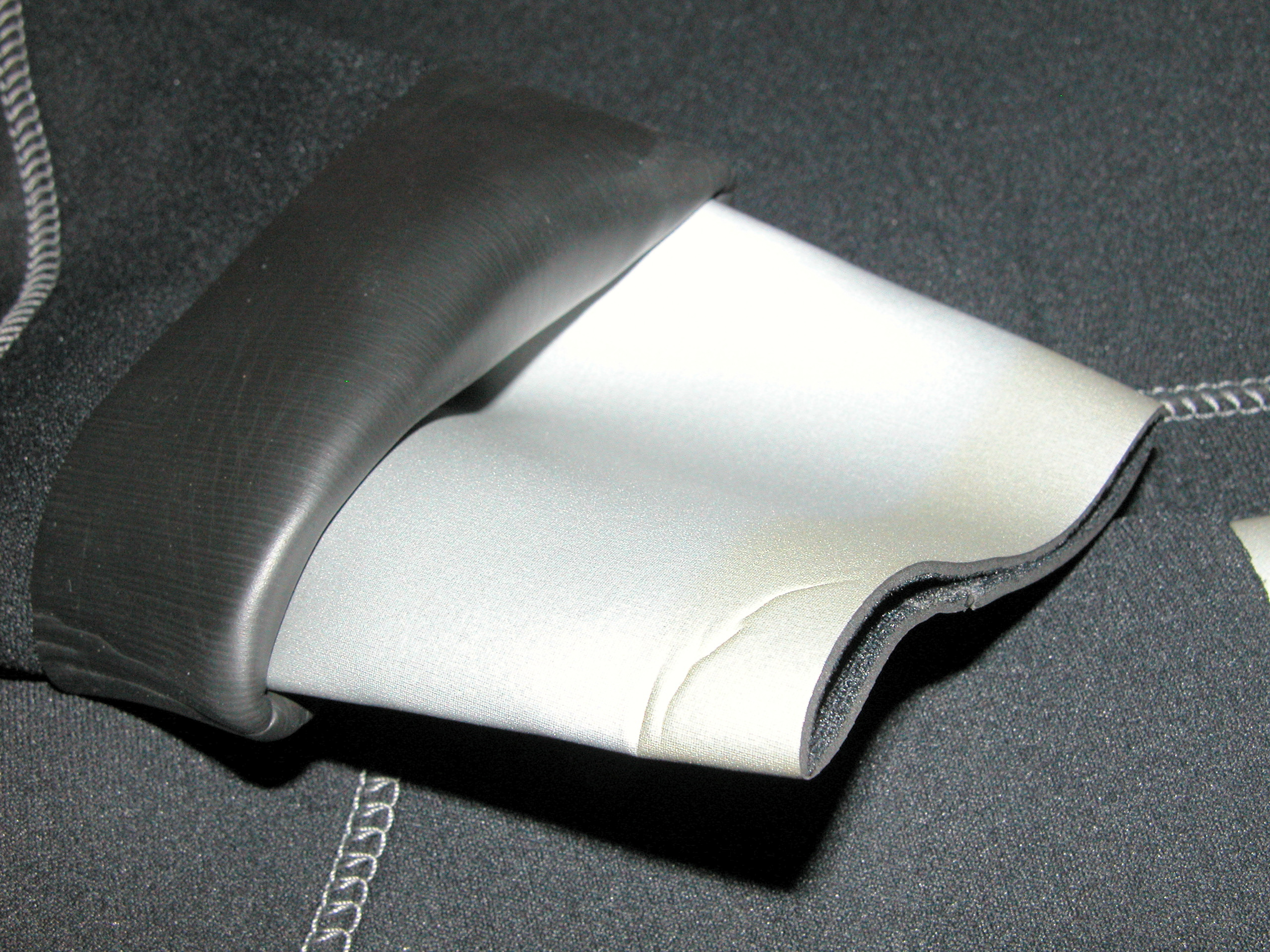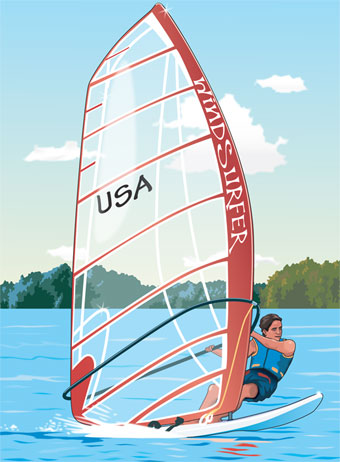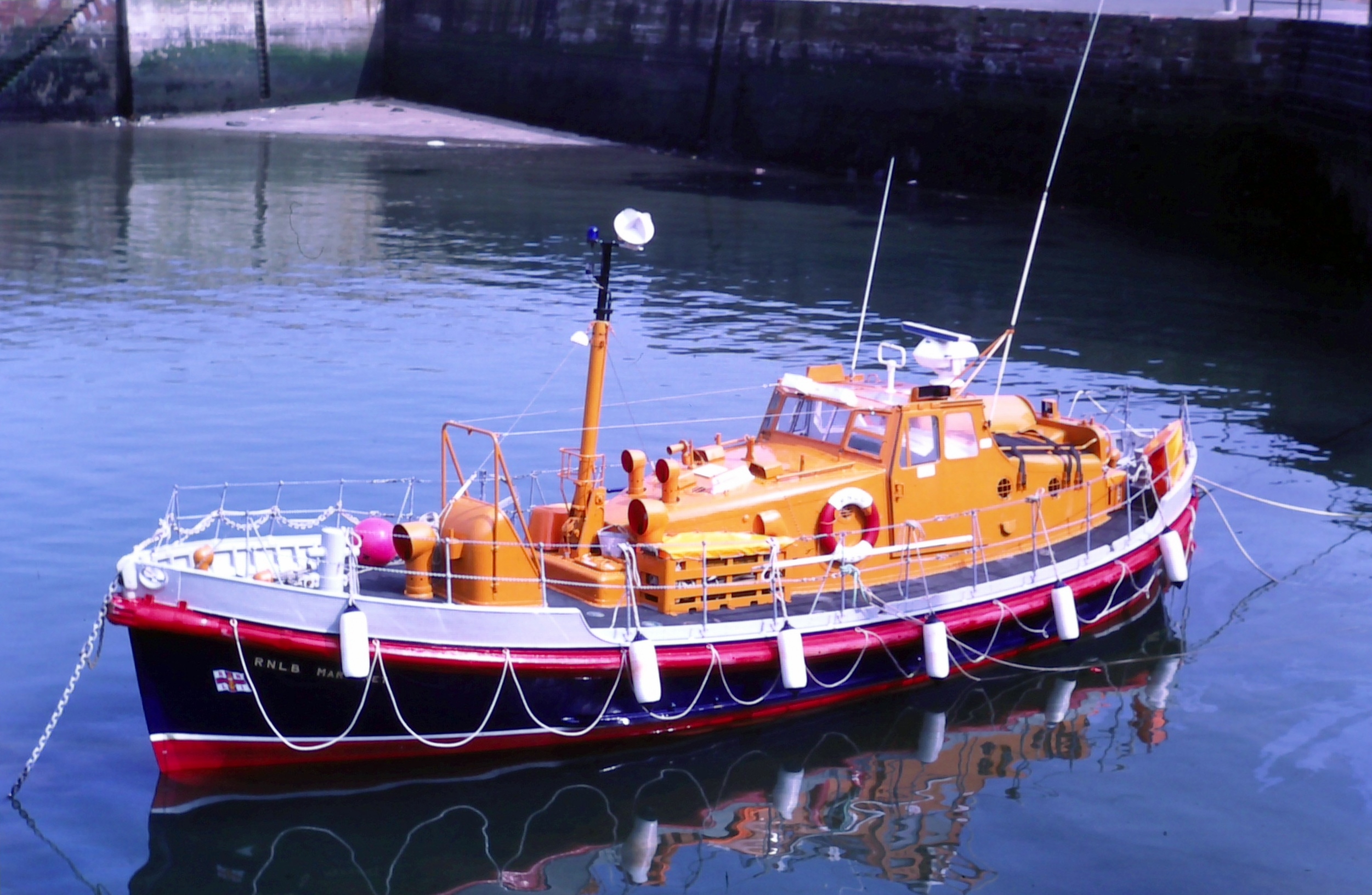|
Wetsuit
A wetsuit is a garment worn to provide thermal protection while wet. It is usually made of foamed neoprene, and is worn by surfers, divers, windsurfers, canoeists, and others engaged in water sports and other activities in or on water. Its purpose is to provide thermal insulation and protection from abrasion, ultraviolet exposure, and stings from marine organisms. It also contributes extra buoyancy. The insulation properties of neoprene foam depend mainly on bubbles of gas enclosed within the material, which reduce its ability to conduct heat. The bubbles also give the wetsuit a low density, providing buoyancy in water. Hugh Bradner, a University of California, Berkeley physicist, invented the modern wetsuit in 1952. Wetsuits became available in the mid-1950s and evolved as the relatively fragile foamed neoprene was first backed, and later sandwiched, with thin sheets of tougher material such as nylon or later spandex (also known as lycra). Improvements in the way joi ... [...More Info...] [...Related Items...] OR: [Wikipedia] [Google] [Baidu] |
Diving Suit
A diving suit is a garment or device designed to protect a diver from the underwater environment. A diving suit may also incorporate a breathing gas supply (such as for a standard diving dress or atmospheric diving suit). but in most cases the term applies only to the environmental protective covering worn by the diver. The breathing gas supply is usually referred to separately. There is no generic term for the combination of suit and breathing apparatus alone. It is generally referred to as diving equipment or dive gear along with any other equipment necessary for the dive. Diving suits can be divided into two classes: "soft" or ambient pressure diving suits – examples are wetsuits, dry suits, semi-dry suits and dive skins – and "hard" or atmospheric pressure diving suits, armored suits that keep the diver at atmospheric pressure at any depth within the operating range of the suit. Function The diving suit is worn as protection from the diving environment. This ha ... [...More Info...] [...Related Items...] OR: [Wikipedia] [Google] [Baidu] |
Dry Suit
A dry suit or drysuit provides the wearer with environmental protection by way of thermal insulation and exclusion of water, and is worn by divers, boaters, water sports enthusiasts, and others who work or play in or near cold or contaminated water. A dry suit normally protects the whole body except the head, hands, and possibly the feet. In hazmat configurations, however, all of these are covered as well. The main difference between dry suits and wetsuits is that dry suits are designed to prevent water from entering. This generally allows better insulation, making them more suitable for use in cold water. Dry suits can be uncomfortably hot in warm or hot air, and are typically more expensive and more complex to don. For divers, they add some degree of operational complexity and hazard as the suit must be inflated and deflated with changes in depth in order to minimize "squeeze" on descent or uncontrolled rapid ascent due to excessive buoyancy, which requires additional ski ... [...More Info...] [...Related Items...] OR: [Wikipedia] [Google] [Baidu] |
Triathlons
A triathlon is an endurance multisport race consisting of swimming, cycling, and running over various distances. Triathletes compete for fastest overall completion time, racing each segment sequentially with the time transitioning between the disciplines included. The word is of Greek origin, from τρεῖς or ''treis'' (three) and ἆθλος or ''athlos'' (competition). The sport originated in the late 1970s in Southern California as sports clubs and individuals developed the sport. This history has meant that variations of the sport were created and still exist. It also led to other three-stage races using the name triathlon despite not being continuous or not consisting of swim, bike, and run elements. Triathletes train to achieve endurance, strength and speed. The sport requires focused persistent and periodised training for each of the three disciplines, as well as combination workouts and general strength conditioning. History The evolution of triathlon as a distin ... [...More Info...] [...Related Items...] OR: [Wikipedia] [Google] [Baidu] |
Open Water Swimming
Open water swimming is a swimming discipline which takes place in outdoor bodies of water such as open oceans, lakes, and rivers. The beginning of the modern age of open water swimming is sometimes taken to be May 3, 1810, when Lord Byron swam several miles to cross the Hellespont (now known as the Dardanelles) from Europe to Asia. In the first edition of the modern Olympic Games in Athens in 1896, the swimming competition was held in open water. In 2000, the Olympic Games first included a triathlon with a 1500 m swim leg, and in 2008, a 10 km open water swim. The FINA World Aquatics Championships has featured open water swimming events since 1992. The FINA World Open Water Swimming Championships was held from 2000 to 2010. Since 2007, the FINA 10 km Marathon Swimming World Cup is held in several events around the world. The activity has grown in popularity in recent years with the publication of bestselling books on "wild swimming" by authors such as Kate Rew and D ... [...More Info...] [...Related Items...] OR: [Wikipedia] [Google] [Baidu] |
Hugh Bradner
Hugh Bradner (November 5, 1915 – May 5, 2008) was an American physicist at the University of California who is credited with inventing the neoprene wetsuit, which helped to revolutionize scuba diving and surfing. A graduate of Ohio's Miami University, he received his doctorate from California Institute of Technology in Pasadena, California, in 1941. He worked at the US Naval Ordnance Laboratory during World War II, where he researched naval mines. In 1943, he was recruited by Robert Oppenheimer to join the Manhattan Project at the Los Alamos Laboratory. There, he worked with scientists including Luis Alvarez, John von Neumann and George Kistiakowsky on the development of the high explosives and exploding-bridgewire detonators required by atomic bombs. After the war, Bradner took a position studying high-energy physics at the University of California, Berkeley, under Luis Alvarez. Bradner investigated the problems encountered by frogmen staying in cold water for long peri ... [...More Info...] [...Related Items...] OR: [Wikipedia] [Google] [Baidu] |
Neoprene
Neoprene (also polychloroprene) is a family of synthetic rubbers that are produced by polymerization of chloroprene.Werner Obrecht, Jean-Pierre Lambert, Michael Happ, Christiane Oppenheimer-Stix, John Dunn and Ralf Krüger "Rubber, 4. Emulsion Rubbers" in Ullmann's Encyclopedia of Industrial Chemistry, 2012, Wiley-VCH, Weinheim. Neoprene exhibits good chemical stability and maintains flexibility over a wide temperature range. Neoprene is sold either as solid rubber or in latex form and is used in a wide variety of commercial applications, such as laptop sleeves, orthopaedic braces (wrist, knee, etc.), electrical insulation, liquid and sheet-applied elastomeric membranes or flashings, and automotive fan belts. Production Neoprene is produced by free-radical polymerization of chloroprene. In commercial production, this polymer is prepared by free radical emulsion polymerization. Polymerization is initiated using potassium persulfate. Bifunctional nucleophiles, metal oxides ... [...More Info...] [...Related Items...] OR: [Wikipedia] [Google] [Baidu] |
University Of California, Berkeley
The University of California, Berkeley (UC Berkeley, Berkeley, Cal, or California) is a public land-grant research university in Berkeley, California. Established in 1868 as the University of California, it is the state's first land-grant university and the founding campus of the University of California system. Its fourteen colleges and schools offer over 350 degree programs and enroll some 31,800 undergraduate and 13,200 graduate students. Berkeley ranks among the world's top universities. A founding member of the Association of American Universities, Berkeley hosts many leading research institutes dedicated to science, engineering, and mathematics. The university founded and maintains close relationships with three national laboratories at Berkeley, Livermore and Los Alamos, and has played a prominent role in many scientific advances, from the Manhattan Project and the discovery of 16 chemical elements to breakthroughs in computer science and genomics. Berkeley i ... [...More Info...] [...Related Items...] OR: [Wikipedia] [Google] [Baidu] |
Windsurfers
Windsurfing is a wind propelled water sport that is a combination of sailing and surfing. It is also referred to as "sailboarding" and "boardsailing", and emerged in the late 1960s from the aerospace and surf culture of California. Windsurfing gained a popular following across Europe and North America by the late 1970s and had achieved significant global popularity by the 1980s. Windsurfing became an olympic sport in 1984. Newer variants include windfoiling, kiteboarding and Wing foiling, wingfoiling. Hydrofoil fins under the board allow the boards to safely lift out of the water and fly silently and smoothly above the surface even in lighter winds. Windsurfing is a recreational, family friendly sport, most popular at flat water locations around the world that offer safety and accessibility for beginner and intermediate participants. Technique and equipment have evolved over the years Major competitive disciplines include slalom, wave and freestyle. Increasingly, "foiling" is r ... [...More Info...] [...Related Items...] OR: [Wikipedia] [Google] [Baidu] |
Rafting
Rafting and whitewater rafting are recreational outdoor activities which use an inflatable raft to navigate a river or other body of water. This is often done on whitewater or different degrees of rough water. Dealing with risk is often a part of the experience. This activity as an adventure sport has become popular since the 1950s, if not earlier, evolving from individuals paddling to rafts with double-bladed paddles or oars to multi-person rafts propelled by single-bladed paddles and steered by a person at the stern, or by the use of oars. Rafting on certain sections of rivers is considered an extreme sport and can be fatal, while other sections are not so extreme or difficult. Rafting is also a competitive sport practiced around the world which culminates in a world rafting championship event between the participating nations. The International Rafting Federation, often referred to as the IRF, is the worldwide body which oversees all aspects of the sport. Equip ... [...More Info...] [...Related Items...] OR: [Wikipedia] [Google] [Baidu] |
Whitewater Kayaking
Whitewater kayaking is an adventure sport where a river is navigated in a decked kayak. Whitewater kayaking includes several styles. River running; where the paddler follows a river and paddles rapids as they travel. Creeking usually involving smaller, steeper, and more technical waterways. Creek boats tend to be short but high volume to allow for manoeuvrability while maintaining buoyancy. Slalom requires paddlers to navigate through "gates" (coloured poles hanging above the river). Slalom is the only whitewater event to be in the Olympics. Play boating involves staying on one feature of the river and is more artistic than the others. Squirt boating uses low-volume boats (usually made specifically for the paddler) to perform special moves in whitewater features. History Paddling on rivers, lakes and oceans is as old as the Stone Age. The raft, the catamaran, the canoe and the kayak evolved depending on the needs and environment of the indigenous peoples in different parts o ... [...More Info...] [...Related Items...] OR: [Wikipedia] [Google] [Baidu] |
Lifeboat (rescue)
A rescue lifeboat is a boat rescue craft which is used to attend a vessel in distress, or its survivors, to rescue crew and passengers. It can be hand pulled, sail powered or powered by an engine. Lifeboats may be rigid, inflatable or rigid-inflatable combination-hulled vessels. Overview There are generally three types of boat, in-land (used on lakes and rivers), in-shore (used closer to shore) and off-shore (into deeper waters and further out to sea). A rescue lifeboat is a boat designed with specialised features for searching for, rescuing and saving the lives of people in peril at sea or in estuaries. In the United Kingdom and Ireland rescue lifeboats are typically vessels crewed by volunteers, intended for quick dispatch, launch and transit to reach a ship or individuals in trouble at sea. Off-shore boats are referred to as 'All-weather' and generally have a range of 150–250 nautical miles. Characteristics such as capability to withstand heavy weather, fuel capacity, na ... [...More Info...] [...Related Items...] OR: [Wikipedia] [Google] [Baidu] |










